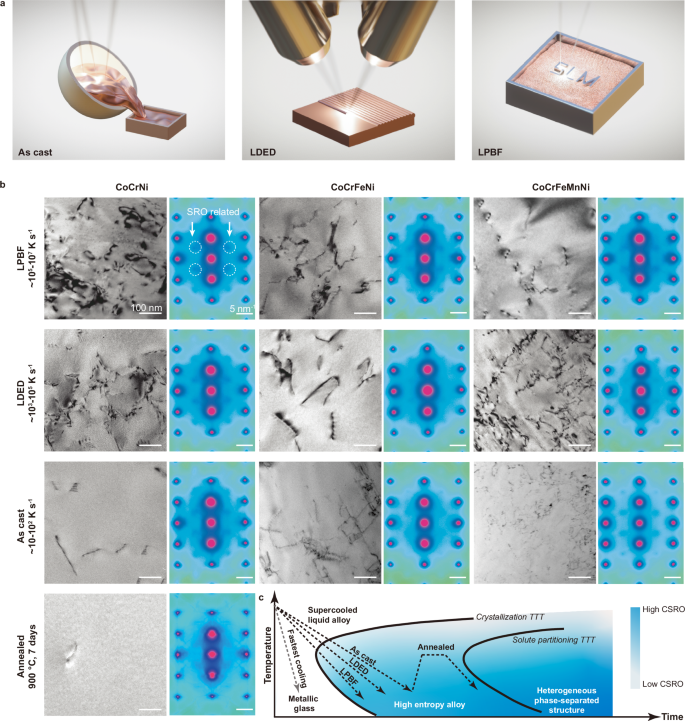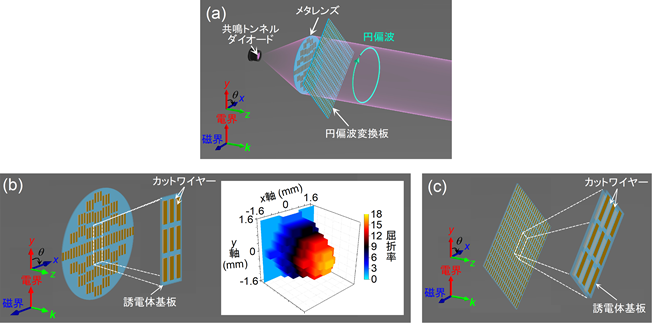2024-08-05 ペンシルベニア州立大学(PennState)
◆この研究では、短距離秩序(SRO)がMPEAの固化プロセス中に形成されることが示され、従来の冷却速度や熱処理方法では制御できないことが明らかになりました。SROの制御は機械的変形や放射線損傷によって可能であり、材料特性の調整に新たな次元を提供します。この発見は材料設計と工学に新たな可能性を開きます。
<関連情報>
- https://www.psu.edu/news/materials-research-institute/story/atoms-advanced-alloys-find-preferred-neighbors-when-solidifying/
- https://www.nature.com/articles/s41467-024-49606-1
多原子元素合金におけるユビキタス短距離秩序 Ubiquitous short-range order in multi-principal element alloys
Ying Han,Hangman Chen,Yongwen Sun,Jian Liu,Shaolou Wei,Bijun Xie,Zhiyu Zhang,Yingxin Zhu,Meng Li,Judith Yang,Wen Chen,Penghui Cao & Yang Yang
Nature Communications Published:01 August 2024
DOI:https://doi.org/10.1038/s41467-024-49606-1

Abstract
Recent research in multi-principal element alloys (MPEAs) has increasingly focused on the role of short-range order (SRO) on material performance. However, the mechanisms of SRO formation and its precise control remain elusive, limiting the progress of SRO engineering. Here, leveraging advanced additive manufacturing techniques that produce samples with a wide range of cooling rates (up to 107 K s−1) and an enhanced semi-quantitative electron microscopy method, we characterize SRO in three CoCrNi-based face-centered-cubic (FCC) MPEAs. Surprisingly, irrespective of the processing and thermal treatment history, all samples exhibit similar levels of SRO. Atomistic simulations reveal that during solidification, prevalent local chemical order arises in the liquid-solid interface (solidification front) even under the extreme cooling rate of 1011 K s−1. This phenomenon stems from the swift atomic diffusion in the supercooled liquid, which matches or even surpasses the rate of solidification. Therefore, SRO is an inherent characteristic of most FCC MPEAs, insensitive to variations in cooling rates and even annealing treatments typically available in experiments.



